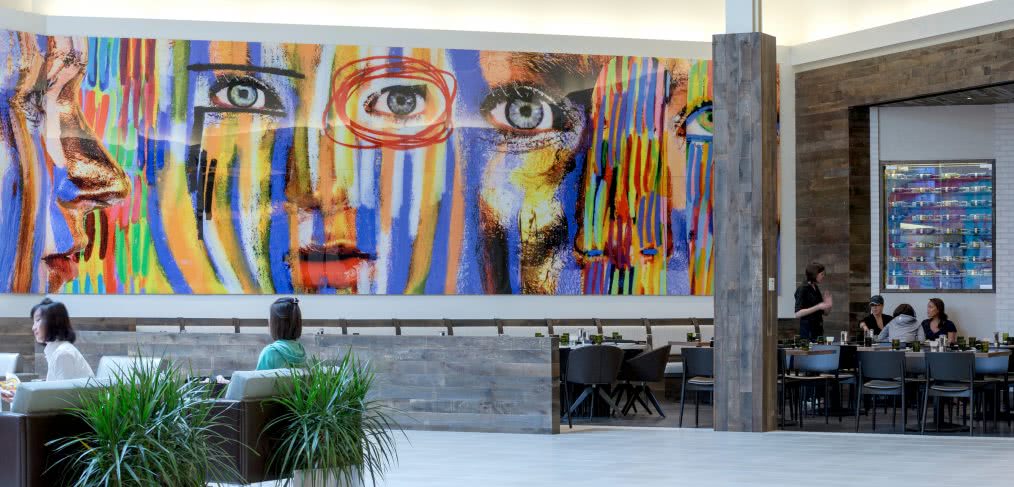
Guest Experience: Creating a Conscious Connection
This is the second in a series of exploratory posts by some of CallisonRTKL’s resident design experts on how design impacts the guest experience—from hotels to workplaces, retail stores, hospitals and everywhere in between—and the common elements and strategies we leverage to create spaces that are people-centric, experiential and memorable.
At CallisonRTKL, we design buildings, landscapes and urban areas that improve the lives of people and the community. And we take this role seriously—after all, the design decisions we make will impact neighborhoods and cities for millions of people for generations to come. Because of this, we not only think about creating great experiences, but also encouraging conscious connections to the built environment.
Why a conscious connection?
There are certain fundamental aspects of the human experience that create a singular impression when people interact with their surroundings. Whether seeing, hearing, smelling, thinking, touching or performing a particular activity or function, our brains are stimulated in a manner that coerces us to feel a certain way about a space.
The kicker is that most of this is done unconsciously. In fact, numerous cognitive neuroscientists have concluded that only 5% of our cognitive activities are conscious, leaving 95% to be generated in an unconscious manner.
CONSCIOUS SHIFT
In today’s experience economy, where guests, visitors and consumers are digitally empowered, time-starved and increasingly demanding when it comes to transparency, it’s essential to get the experience right the first time and consistently every time thereafter—if not, you’ve lost them, and you’ve failed to utilize design in a way that creates a meaningful connection.
So what can we, as designers, do to shift some of this unconscious activity into the realm of consciousness so that people more readily associate great experiences with great places?
We at CallisonRTKL believe the first and most important step in cultivating an elevated, conscious connection is developing the brand experience. Branded destinations have a proven competitive advantage because they encourage people to consciously associate their good experience with a name and a place, resulting in return visits, heightened engagement and recommendations to others.
FROM BLAND TO BRAND
In our work with projects that run the gamut from retail and hospitality to healthcare and workplace, we’ve identified a few key design principles that are highly effective in elevating a project from forgettable to memorable in a meaningful, conscious way:
- Empathize with your user.
Empathy is at the core of human-centered design, and for good reason. We must understand and grasp the context and complexities of the lives of the people we’re designing for to create innovative solutions. We do not live in a “one-size-fits-all” world, so we cannot expect “one-size-fits-all” designs for the built environment to work.
- Understand who you are.
Branded destinations are like people in that they have a unique set of traits that define them. Before we even start dreaming and drawing, we need to work with the brand to define and understand its identity. Are you an interesting, smart, cutting-edge boutique hotel made for the curious traveler or are you a more practical, easy-going and casual B&B for those seeking a weekend escape? These words serve as creative fodder for the design and inform the overall guest experience.
- Consistently deliver your brand.
This is probably the most difficult aspect of a branded destination, and it’s where most fail. It’s why we ensure that everyone from the client to landscape and interiors designers, architects and environmental graphics teams are clear about what this project is and who it represents and serves. Each person who touches your project should understand the brand and be capable of not only delivering, but enhancing it.
Going beyond the experience and executing more thoughtful design development with the goal of creating conscious connections is vital to the future of our buildings, neighborhoods, cities and world—and it sure makes things a lot more interesting and memorable in the process.

I love this idea, but from the beginning, we as design professionals need to be clear on how uniquely branded spaces and non “cookie-cutter” details take a toll the “on demand” design process. In an age where there is no time to slow down – developers/GC’s need to be made aware what it takes to create an individual identity. The design process needs a more thoughtful, yet efficient timeline of deliverables, and a more realistic idea of budget. If one can’t compare people apples to apples, neither can one compare design as apples to apples. Therein lies the real solution…what it is? I don’t know, but I’ll hungry for a Honeycrisp right now ;)
Just t